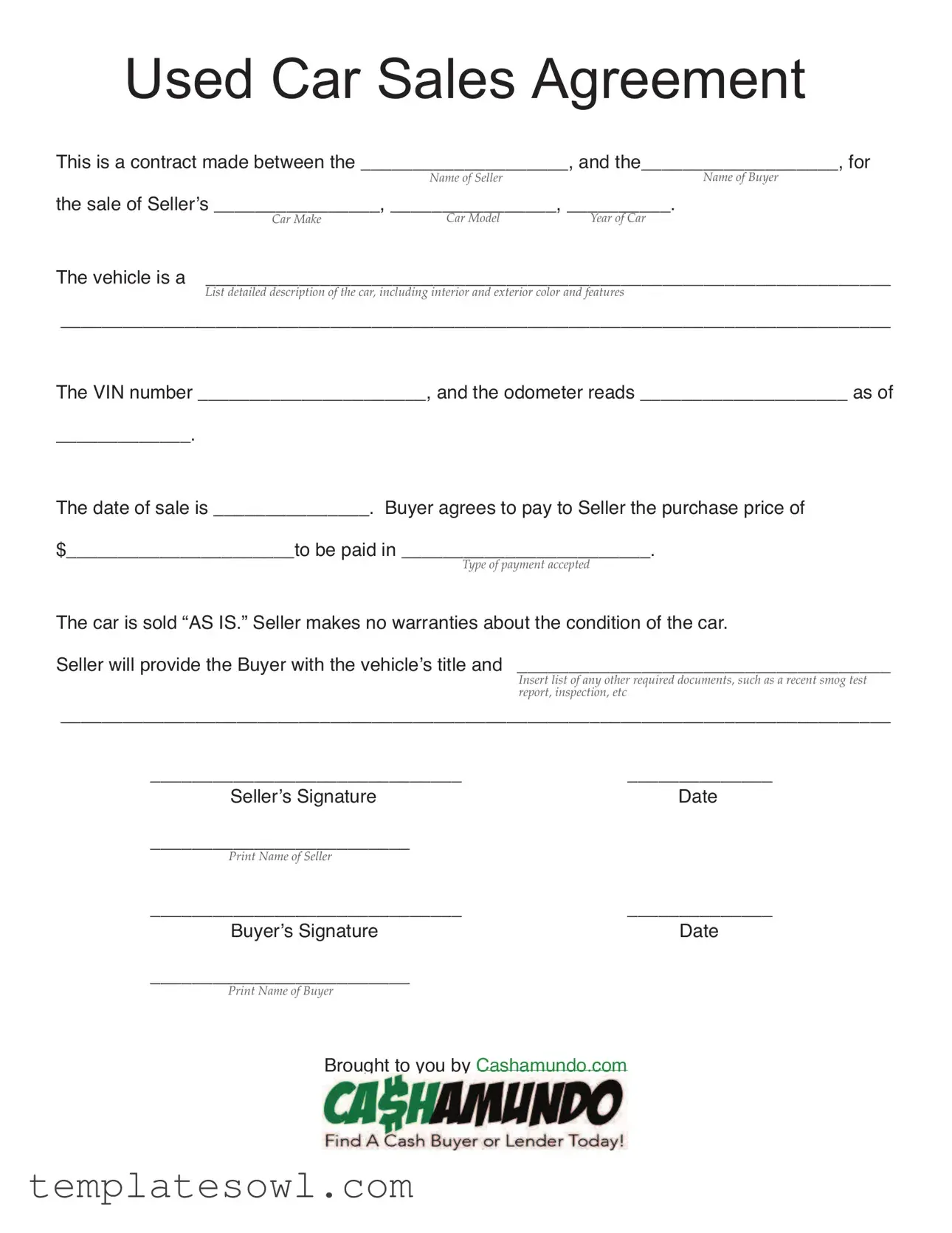What is the Used Car Agreement form?
The Used Car Agreement form is a legal document that outlines the terms and conditions of a car sale between the seller and buyer. It includes details about the vehicle, the agreed purchase price, payment type, and necessary disclosures regarding the condition of the car.
What information is required on the Used Car Agreement form?
The form requires the names of the seller and buyer, vehicle details such as make, model, and year, as well as a detailed description of its condition. Additional items include the vehicle identification number (VIN), odometer reading, sale date, and purchase price.
What does "AS IS" mean in the agreement?
"AS IS" signifies that the car is sold without any warranties from the seller regarding its condition. This means the buyer accepts the vehicle in its current state, and the seller is not responsible for any defects or issues that may arise after the sale.
What documents does the seller provide to the buyer?
The seller must provide the buyer with the vehicle’s title, which shows legal ownership. Additionally, the seller may need to provide other documents, such as a recent smog test report or inspection certificate, if applicable in the jurisdiction.
What payment methods can be accepted?
The form allows the seller to specify the type of payment accepted for the purchase. Common methods include cash, checks, or bank transfers. Both parties should agree on the payment method before finalizing the sale.
What should the buyer do before signing the form?
The buyer should carefully review all terms and details included in the agreement, inspect the vehicle thoroughly, and consider obtaining a vehicle history report to check for any past issues. Understanding the condition and history of the vehicle is crucial.
Can the agreement be modified after it is signed?
Once the Used Car Agreement is signed by both parties, it is typically considered final. Any modifications or changes should be documented and signed by both parties to avoid future disputes.
What happens if the seller cannot provide the necessary documents?
If the seller is unable to provide crucial documents, such as the title or required inspection reports, the buyer should reconsider proceeding with the sale. It's important to ensure all necessary documentation is present to avoid complications later.
How should the form be filled out?
The form should be completed accurately and legibly. All required fields should be filled out, and both the seller and buyer should sign and date the agreement once they have reviewed it thoroughly. Keeping a copy for each party is advisable as well.

